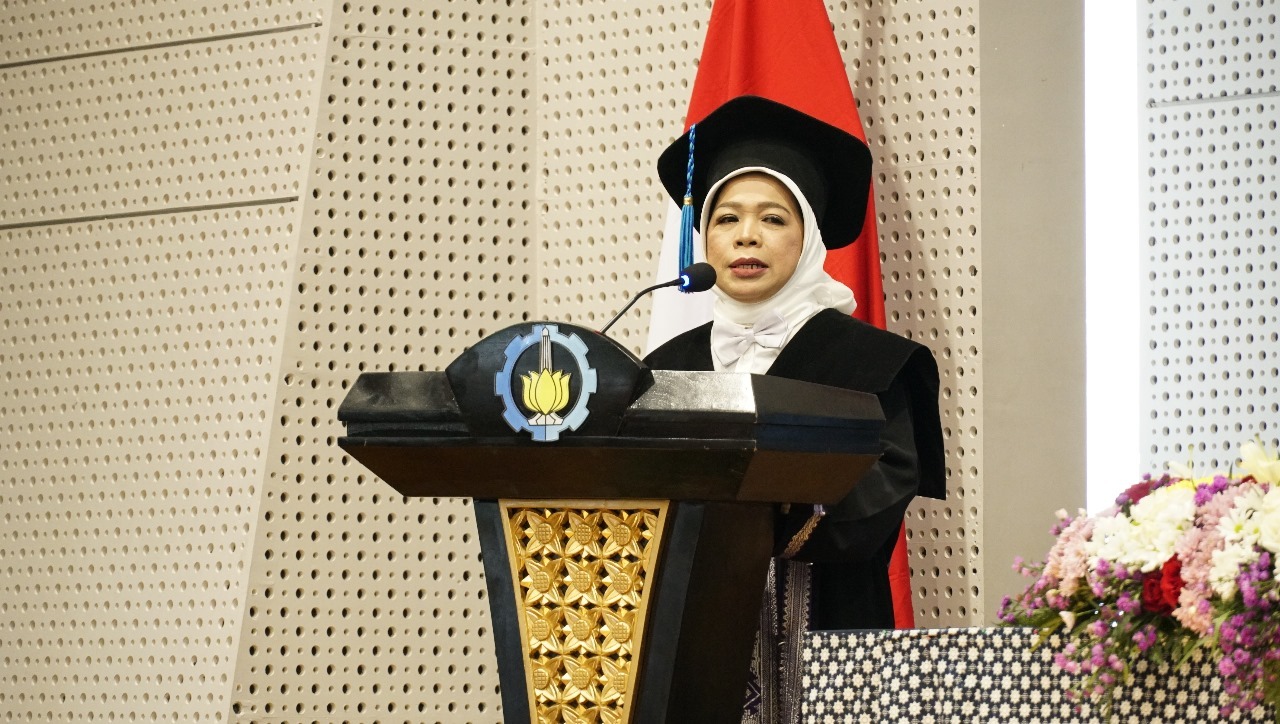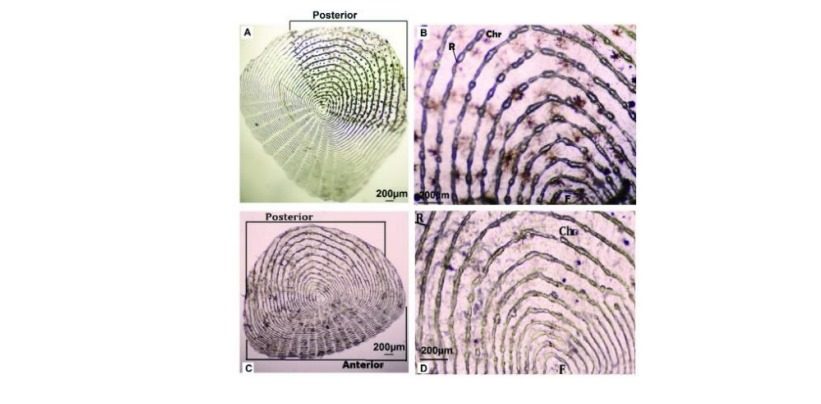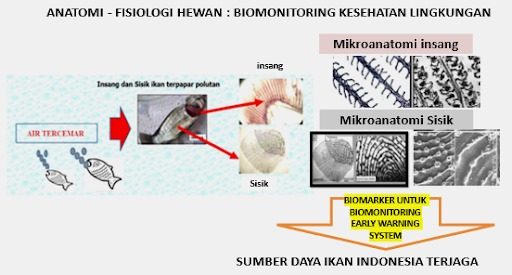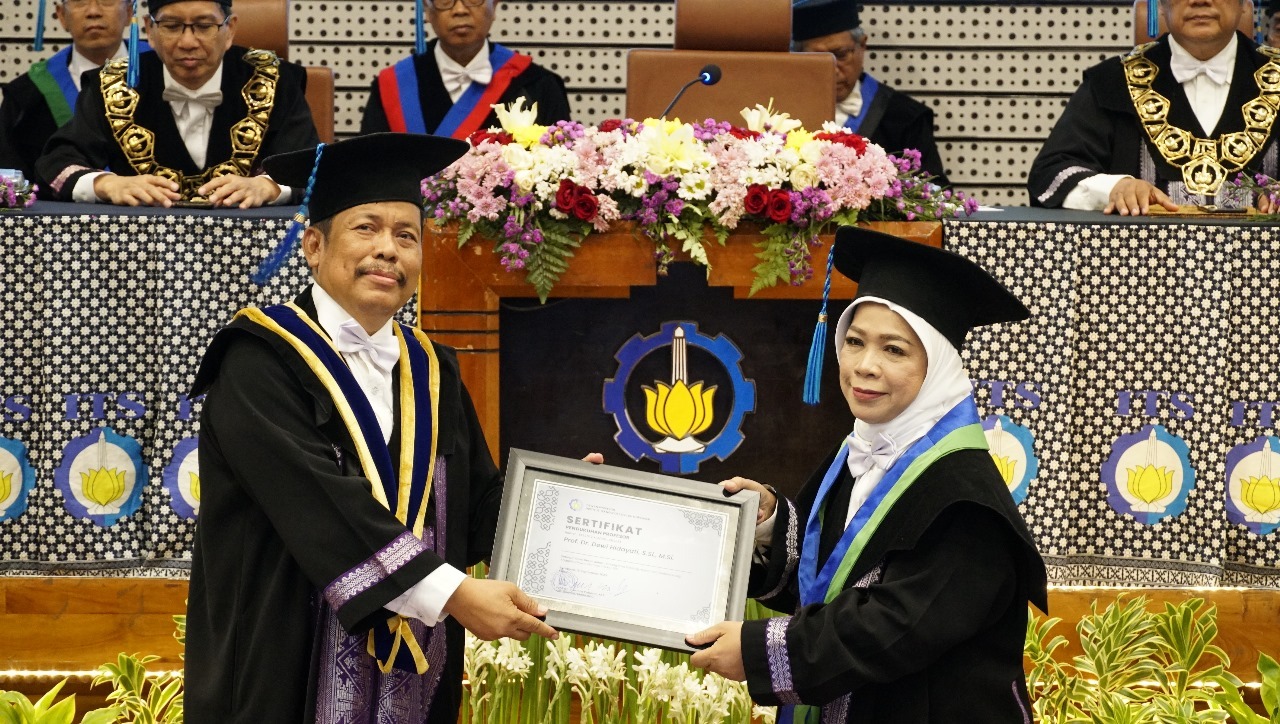ITS Professor Reveals Strategy in Sustainable Fish Resource Management

Prof Dr Dewi Hidayati SSi MSi When delivering her scientific oration entitled The Important Role of Understanding Fish Biology in Sustainable Management of Fish Resources at the Inauguration Session of ITS Professors
ITS Campus, ITS News — Indonesia now holds the title as the country with the second highest level of fish diversity in the world. Unfortunately, this potential has not yet received special attention. Based on this, ITS Professor, Prof Dr Dewi Hidayati SSi MSi shared her strategy for fish management and its use in sustainable management patterns.
The Head of the Biology Department of the Sepuluh Nopember Institute of Technology (ITS) said that based on the UN Environment Program report, Indonesia’s aquatic ecosystem is experiencing various environmental problems. Seeing these conditions, Dewi developed research on the physiological and ecotoxicological conditions of fish as indicators of water pollution (biomonitoring).
ITS’s 166th professor uses qualitative and quantitative analysis related to research in the form of biological responses from fish. In general, fish that are exposed to pollutants from their environment will experience damage to their organ structures. “The damage can be seen in the microanatomical appearance of the fish’s gills and scales,” she said further.

Results of microscopic observations of chromatophore density on fish scales that experience irregular shape after being exposed to pollutants in the waters
The gills and scales of fish that are exposed to pollutants will experience deformation or change in shape, which can be seen from the irregularity of the shape and the increase in microscopic holes on the surface of the fish scales. “This is caused by a decrease in the density of chromatophores on fish scales due to the massive concentration of existing pollutants,” she continued.
In this context, the use of fish for biomonitoring cannot only be assessed through changes in the microanatomic structure of the gills that arise due to pollution. However, it is also an important indicator in monitoring the impact of pollution on the aquatic environment.

Utilization of fish resources in the role of biomonitoring of aquatic environmental health
Dewi, who specializes in animal physiology and ecotoxicology, explained that the gills of fish exposed to pollutants will experience abnormal histology symptoms. This can be seen from the lamellae on the gills experiencing fusion, which in turn can interfere with the process of taking dissolved oxygen in the water.
According to research conducted, these changes can be an important clue in monitoring the impact of pollution on the aquatic environment. The use of fish as a biomonitoring indicator is becoming increasingly relevant for understanding the quality of the aquatic environment and potential risks to aquatic ecosystems.

Giving the professor’s inauguration certificate by the Chair of the ITS Professorial Council, Prof Dr Ir Imam Robandi MT (left) to Prof Dr Dewi Hidayati SSi MSi who was appointed as ITS’s 166th professor
Not only is it useful as a marker of quality in the environment. The use of fish analysis can also be applied to potential new biomaterials. Dewi’s research results also show that one of the fish skins, namely catfish, has a high collagen content. “This is an opportunity to develop the use of halal gelatin in the medicine and food industry,” she explained.
Based on the results of her research, the recipient of the Satyalancana Karya Satya award from the President of the Republic of Indonesia in 2019 hopes that all people will have the awareness to help develop the potential of Indonesia’s natural wealth. “Development of potential accompanied by understanding will have an impact on the nation’s independence and people’s welfare,” she concluded. (ITS Public Relations)
Reporter: Mifda Khoirotul Azma
Related News
-
ITS Sends Off 12 Free Mudik Vehicles Ahead of Eid Al-Fitr
The dispatch of 11 bus fleets carrying ITS students for the Free Mudik ITS 2024 ITS Campus, ITS News
September 27, 2023 12:09 -
ITS Lecturer Wins 2024 Female Science Talents Intensive Tracks from Germany
Sri Fatmawati SSi MSc PhD, a lecturer at the Department of Chemistry, ITS, has emerged as the winner of
September 27, 2023 12:09 -
ITS Shares Tips & Tricks on SNBT 2024 Socialization
(from left) Executive Secretary of SNPMB 2024, Bekti Cahyo Hidayanto SSi MKom, Head of the Admissions Subdirectorate at ITS,
September 27, 2023 12:09 -
Supporting Defense in Indonesia, ITS Professor Creates Anti-Radar Material
Professor Dr. Mashuri SSi MSi, while delivering his academic oration on anti-radar materials during the ITS Professorial Inauguration. ITS
September 27, 2023 12:09
